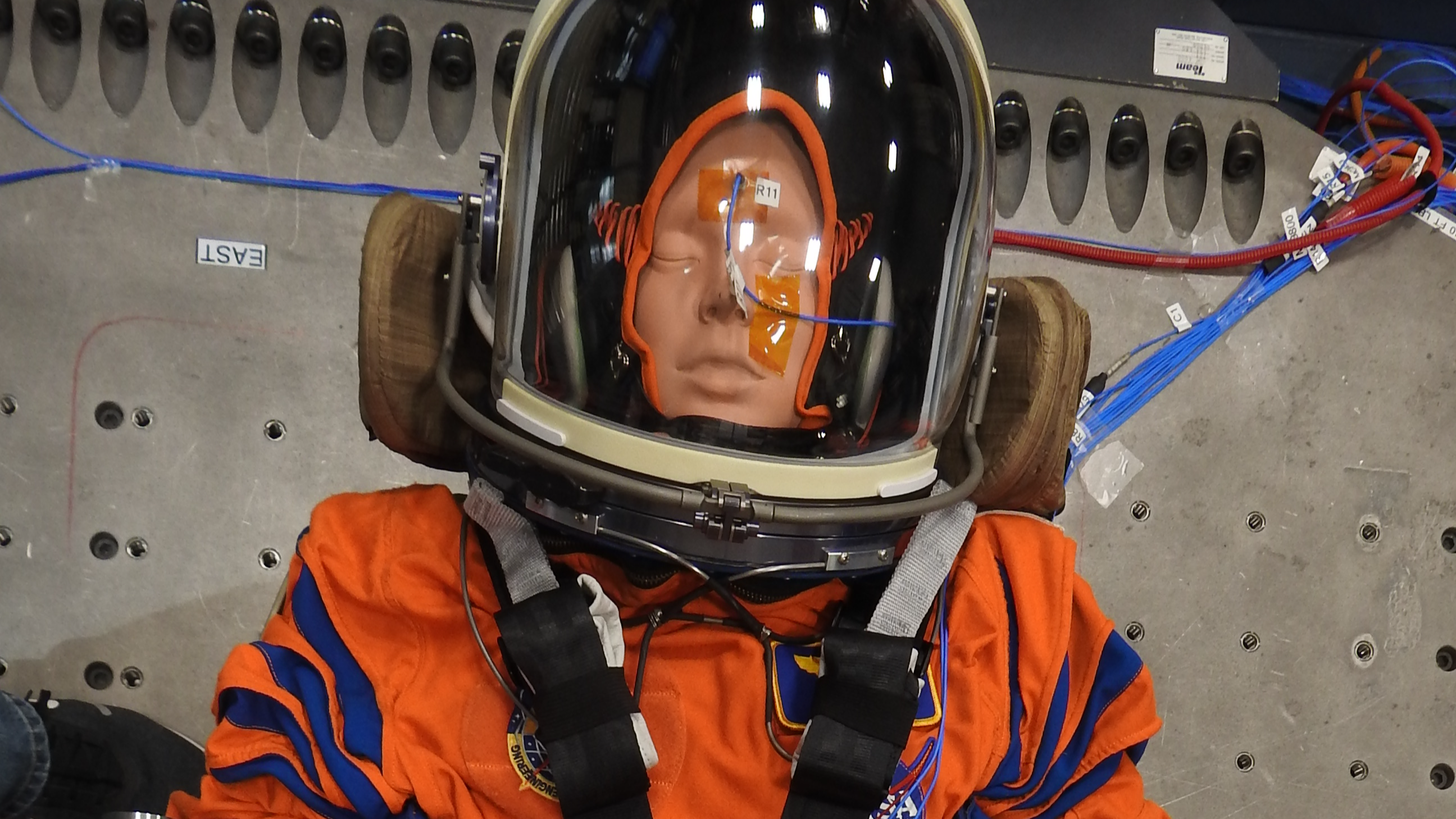
Before any humans head back to the moon in the near future, three dummies are testing it out in NASA’s Artemis 1 mission. One is a full male-bodied manikin; the other two are female-bodied torsos. The varied manikin bodies — made with materials that simulate the stuff that makes up humans, like our skin, bones, and organs — will provide scientists important, inclusive data about radiation for future Artemis astronauts in 2023 and beyond.
NASA announced the name of the full manikin Tuesday: Commander Moonikin Campos. The name was chosen through a public poll that received more than 300,000 votes. The last name of Campos was picked in honor of Arturo Campos, who helped direct the Apollo 13 astronauts safely back to Earth after an oxygen tank failed on their spacecraft.
Commander Moonikin Campos will be decked out in a full Orion Crew Survival System suit, the same that astronauts will wear in phases of future Artemis missions. Campos is also donning a couple of sensors to detect the amount of radiation that astronauts could encounter inside the Orion spacecraft.

The female-bodied torsos, aka phantoms, were named Helga and Zohar in 2020 by the German Aerospace Center and Israel Space Agency, respectively. With radiation sensors embedded throughout their bodies, they’ll be testing out an AstroRad vest designed to protect astronauts’ vital organs from radiation. Zohar will be wearing the vest and Helga will not, allowing scientists to determine the effectiveness of the clothing.
Using female-bodied phantoms allows scientists to measure how radiation could effect women, as women tend to have a greater sensitivity to radiation than men, NASA noted in 2020. AstroRad vests have already been worn by astronauts on the International Space Station (ISS) to test their fit, comfort, and mobility.

Credit:
NASA has historically failed women in its astronaut program, excluding them entirely in the first 19 years. Astronaut Sally Ride was the first woman selected for the agency’s program, becoming the first U.S. woman to enter space in 1983. Of the 339 Americans that have been to space, just 45 have been women.
The Artemis program has been touting that it will send the first woman and person of color to the moon in the coming years. Using female-bodied manikins in the Artemis 1 mission is key to creating inclusive designs and compiling inclusive data for scientists and astronauts going forward, and shows that NASA’s promises aren’t empty.
Artemis 1, expected to launch later in 2021, will be a three-week trip around the moon and back. Artemis 2, NASA’s first crewed mission to the moon since the ’70s, is expected to launch in 2023 and will also circle the moon before returning to Earth. The crew for Artemis 2 has not yet been determined.







